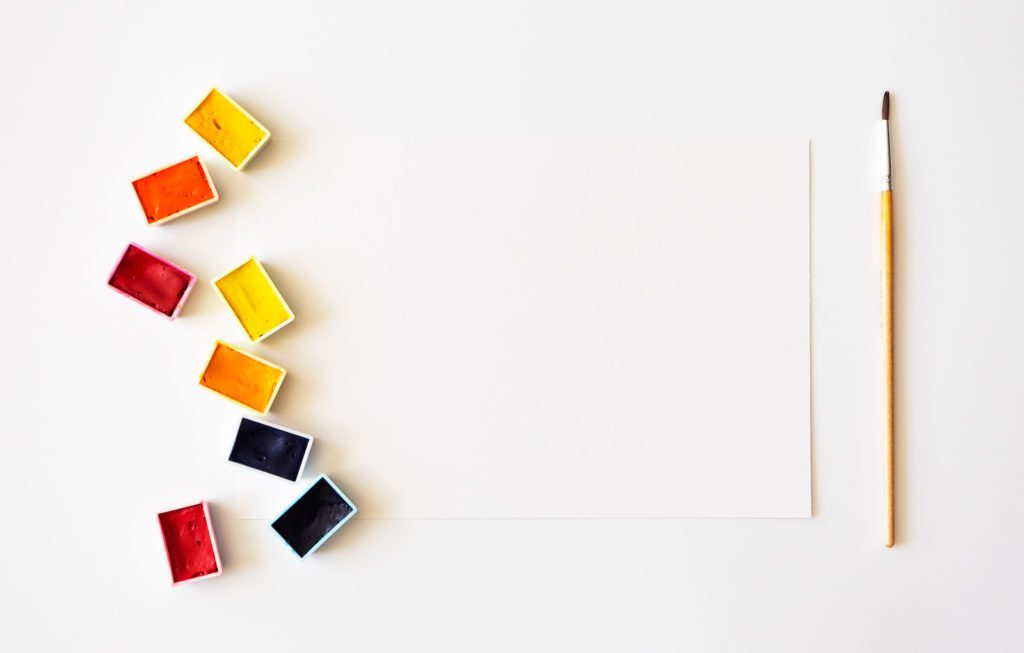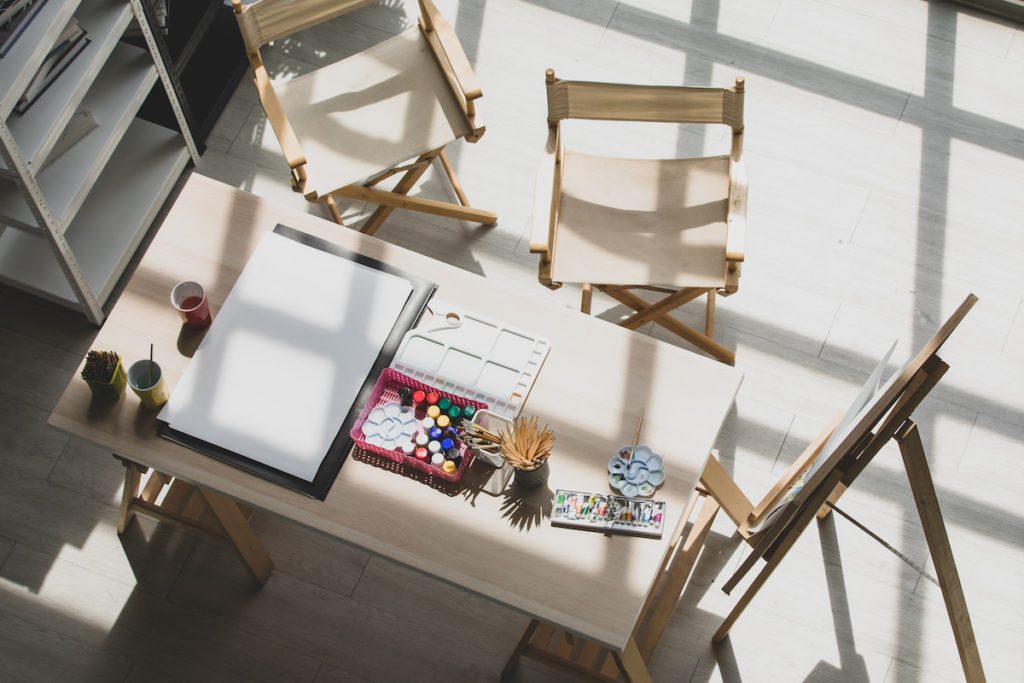That’s a great title, isn’t it! Wouldn’t it be great if you could just read a few hundred words under the heading “How to Paint in Watercolor” and that would be it, done. You’d be able to create masterpieces easily on a daily basis exactly the way you wanted to. Something like “How to Bake a Cake” – it’s just a matter of following a recipe, right?
Wrong. You and I both know that even following a cake recipe carefully doesn’t guarantee success every single time, especially not the first time. After many cakes have been attempted, many have failed, some degree of success has been achieved and finally the piece de resistance has been produced – then, and even then, some will still fail. The sponge will not rise, the fruit cake will sink in the middle, the chocolate brownies will fail to set. You cannot guarantee success even after reading the instructions. Practice makes perfect!
The best piece of advice I can give to wannabe artists is to paint every day.
And in no way is the painting of watercolors an exception to that rule. Following the occasional “recipe” on YouTube isn’t going to make you into a painter. If you want to make yourself happy when you pick up a paintbrush, and not end up breaking it into small pieces every time you try to paint, then you are going to have to learn a few rules.
Yes, I know, rules are boring. But with watercolor if you ignore them you will frustrate yourself in ways you can’t yet imagine. Once you know the rules, you can start to break them, within reason. So now I’d like to share with you my TWO rules for painting in watercolor. Yes, only two rules. The absolute bare minimum of things you need to know before you start ruining innocent sheets of paper.
THE RULES – No. 1. MINIMUM MATERIALS
Do not think that you will be a good painter if you have the best materials. You need APPROPRIATE materials. Neither too expensive, nor too cheap.

- Paper.
- Watercolor paper. Minimum weight 90lb. Cold press. Cellulose or Cotton Blend. Sheets. 8 x 10 inches. A good supply. Do not pay so much for the paper that you will hesitate before painting on it.
- Sketch paper. Minimum weight 60lb. Smooth white paper, cellulose. Pad, 8 x 10 inches minimum. Two. One for paint sketches, one for pencil and ink. Quality good enough that paint and ink do not bleed through the paper.
- Paint
- Decide on tubes or pans, or even both.
- I suggest tubes for use in the studio. No more than 24 colours, from which you can mix every colour you need. Student grade. You don’t need professional expensive paints at this stage in your career.
- Pans are good for taking outside to paint in the open. No more than 12 colours are needed. Student grade, a reputable brand, not children’s paint.
- Decide on tubes or pans, or even both.
- Brushes
- Synthetic brushes.
- Rounds. I suggest size 8, 12 and 16. This will cover all your needs. Make sure it is a brand with a good point. This requires some research and I will talk about this in another article.
- Other brushes. I suggest a 1 inch flat or a 3/4 inch mop for washes. You might also like a rigger for fine lines and a cat’s tongue for flower petals.
- Synthetic brushes.
- Other equipment that might be handy:
- palette – a white china plate will do fine
- painting board
- washi tape
- HB pencil
- plastic eraser
- 2 water containers, jam jars will do fine
THE RULES – No. 2. MAXIMUM MOTIVATION
Once you have gathered together your supplies the next thing you need is to organise your life a little bit. There are several things you need more than the above in order to become a watercolour painter. These are:
- The desire to be able to paint
- The motivation to get started each day
- The time in which to paint
- Peace and quiet to paint in

You don’t need a fancy studio, a teacher, loads of books, a shop to sell in, an art group, membership of a society, expensive online courses, or anything else you can think of as distractions from the business of painting. You don’t even need YouTube videos and you definitely don’t need Pinterest or Instagram.
You just need to sit down in a quiet place (the corner of the kitchen table will do if you put on noise cancelling headphones…) and get started.
The best piece of advice I can give to wannabe artists is to paint every day.
Let’s talk about what that means in reality.
"I don’t have time to paint every day"
I cook every day. I have to, because otherwise I would die. This means that I can cook reliably edible meals every time. Because I practice.
I also paint every day. I have to, because otherwise my YouTube channel would die. This means that I can create decent paintings every time. Because I practice.
Do you see the connection?
The difference is that I actually want to paint, but don’t really want to cook, but I do it anyway because the motivation is strong (not dying of starvation…)
Yet although I want to paint, often I don’t do it. (I’m talking about the days before I had the channel here, or the hypothetical you). I felt as if I wanted to paint, but I couldn’t muster up enough reasons. There was housework to be done, shopping, chatting, phone calls, showers, socialising… you name it, it got between me and my painting.
Then Covid came along and all these activities became undoable. Confined to the house millions of people turned to indoor hobbies and many picked up a brush for the first time and sat down, with spare time, to paint.
Let’s keep the momentum going then, and pretend that we still have time to paint every day!
Because that’s how you will learn and get good at painting, whatever style you turn out to have.
“I don’t know what to paint if I can’t look at Pinterest or Instagram“
So what do you think people used to do before those things existed?
I remember my first art lesson when I was eleven years old. The teacher gave us all a big sheet of paper, some children’s poster paints and a thick ugly brush and told us to paint the subject written on the blackboard:
“Bathing the Dog”
To be continued…
I wasn’t going to practice today as getting disheartened – now I am!
THANK YOU!
Wonderful Blog and when I read it, was like listening to you in person. You have a beautiful sense of humour as always. Rules are refreshing reminders, especially if your art room and supplies are in a chaotic state, including one’s mind at times. I have a Pinterest Board designed for others, not myself, and occasionally if I remember post on my Instagram. I can doodle, sketch objects found in my apartment, and redesign them. But best of all I revisit your YouTube and my other favourite YouTube artists. Take care and looking forward to another enjoyable Blog.
Love how you you encourage us.
Loved this! Where is part 2, I can’t find it?
Here it is! Just published 🙂 https://dianeantone.com/how-to-paint-in-watercolor-part-2/